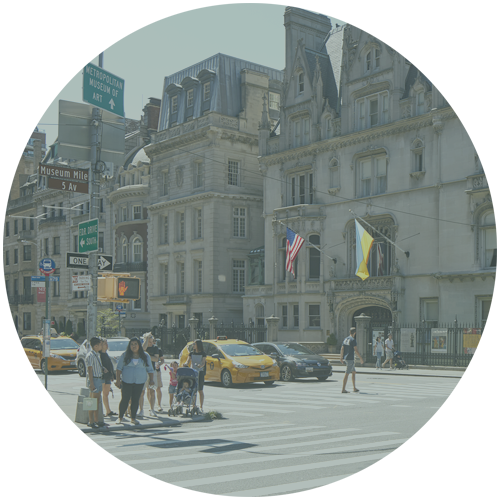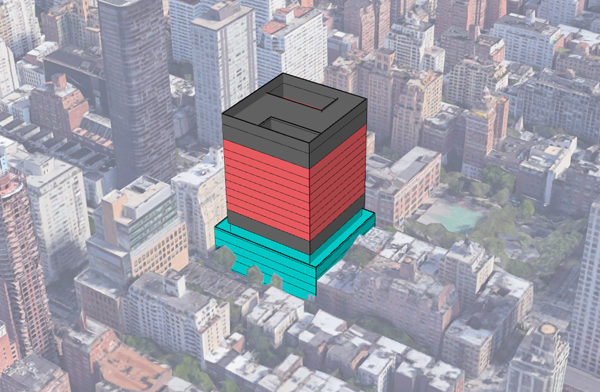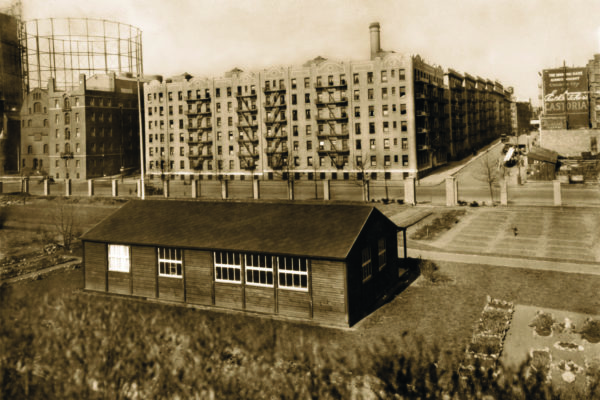About
FRIENDS HISTORY
FRIENDS of the Upper East Side began as a group of volunteers interested in supporting preservation soon after the designation of the Upper East Side Historic District in 1981.
The years that followed the adoption of the New York City Landmark’s Law were marked by the designation of numerous historic districts and individual landmarks throughout the city. The Upper East Side gained its first districts early on, with Treadwell Farm designated in 1967 and Henderson Place in 1969. The initial districts were followed by Carnegie Hill and Metropolitan Museum Historic Districts, designated in 1974 and 1977 respectively. Spanning from East 59th to East 78th Streets, the Upper East Side Historic District, was designated in 1981, the largest one in our neighborhood, and one of the largest in the city.
With the rapidly increasing number of landmarked structures in the city, the Municipal Art Society saw the need for additional local community groups supporting preservation in New York City. At the time, there was a growing recognition that designation was only the first step, and that much of the ongoing work of preservation had to do with monitoring and advocating for sensitive change in neighborhoods. FRIENDS was one of the many watchdog organizations incubated by MAS. Accordingly, an essential part of our work has been to review every Upper East Side application that appears at a public hearing of the Landmarks Preservation Commission and offer expert testimony.
In 1982, The Municipal Art Society, with the support of the J.M. Kaplan fund, headed by Joan Davidson, and by Ronald Lauder, assembled FRIENDS’ first Board of Directors. Halina Rosenthal became our first president, and our first employee was John Weiss, now LPC’s Deputy Counsel. The initial Board members were chosen by MAS for their active community leadership and vast experience in community issues. During the early years, FRIENDS created a monitoring program with over 120 volunteers to watch over the protected buildings in the neighborhood’s historic district. FRIENDS also created a photographic inventory of every property in the Upper East Side Historic District circa 1982 – a project which resulted in over 2,000 slides.
Throughout our history, FRIENDS has consistently fought for sensitive development that enhances, rather than threatens, the character of the Upper East Side. An early victory in 1985, under Halina’s leadership, was the rezoning of the residential side streets on the Upper East Side to preserve their low height, typically five to six stories. The new contextual zoning, called R8B, permitted no more than 60 feet in height, and resulted in one of the most significant and essential characteristics of the entire Upper East Side. This classic Halina Rosenthal letter from FRIENDS’ early archives describes the multiyear effort. FRIENDS was also fundamental in the downzoning of Lexington Avenue and the banning of sliver buildings, both implemented in 1983.
FRIENDS has come a long way from its first teeny tiny office in the Barbizon Hotel with a shared bathroom. The building was then a women-only residential hotel at Lexington and 63rd, and is now an Individual Landmark. All of our former Executive Directors moved on from FRIENDS to occupy notable roles in the government and other preservation organizations in New York City and State. Under the leaderships of Halina, Anthony C. Wood, Anne Millard, and now Franny Eberhart, FRIENDS has worked in collaboration with the City of New York and has successfully shaped rezonings both to protect the existing built environment, and to support new development that serves our diverse community.
More recently, in 2010 FRIENDS completed a ten-year effort to expand the Upper East Side Historic District when the Landmarks Preservation Commission officially designated an extension that covers 75 buildings along Lexington Avenue and adjacent side streets between East 63rd and East 75th Streets.
Currently, in facing the changes that our neighborhood has been experiencing, FRIENDS is actively fighting the numerous loopholes developers have been using to achieve exorbitant building heights. In 2019 we celebrated the amendment of the zoning resolution that limits the use of some of these loopholes in residential neighborhoods. But our work is not done yet! Join us in preserving and celebrating the architectural legacy, livability, and sense of place of the Upper East Side.

Related Posts
-
 12
Nov
12
Nov
Proposals Chipping Away at the Midblock
DetailsOne of FRIENDS’ earliest initiatives, led by our founder Halina
-
 07
May
07
May
A Perilous Path to Protection: Celebrating the 30th Anniversary of a Landmark
DetailsApril 2020 marks the 55th anniversary of the New York



